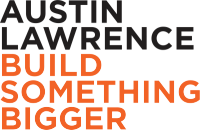Facilitate Product Evaluation, Put Competition on Defense, Build Brand Loyalty, Expand Market Share
The last time something like 15 percent of the workforce was unemployed was in 1940. We were still digging out of the Great Depression, during which unemployment peaked at 25 percent globally in 1933 (this is a grim unemployment number we may yet reach). Building up for World War II was beginning to transform the U.S. economy, finally. It was a very different time and the root cause was not a virus, but rather an ineffectual governmental response to a banking collapse brought on by stock market speculation. The effects ripped through every aspect of the US and global economy.
We can hope that our institutions and leadership are more effective and resilient, but we must take responsibility for the survival of our businesses and deploy strategies differently in a world dominated by fear, uncertainty and doubt. For SaaS companies, it will generally be more difficult to generate new revenue than before, especially as often – a leap of faith is required on the part of the prospect. Sorry to start out with doom and gloom, but maybe this will help: Think of the last time you went to a gelato shop… there are many flavors to choose from, and they cheerfully offer samples. Your business needs to do so, too.
Get a freemium version in the hands of as many people as possible.
Risk aversion can be expected to increase dramatically as clients and prospects perceive existential risk in other areas of their lives, even if their businesses remain relatively healthy. For that reason, marketers of all kinds must reduce the risk of making a decision and correspondingly increase the perceived reward of making a change. Interestingly, while there will be initial resistance to change because the world around us has fundamentally changed, decisions will be possible once that initial resistance has been overcome. Assuming that the new experience (your SaaS) is a really good one, that is. It’s just one paradox of the status quo being so completely smashed.
You can be of service to many more people in your target market if you offer a freemium version of the product. Your free version must be of value to the user, even if they never convert as a paid user. But with smart product management, strong and automated customer support during onboarding and initial use and a value-based pricing strategy that encourages growing commitment to your software, freemium (or product led growth as it is often called) can dramatically expand your user base and revenue potential. I recommend you visit the Open View Partners website for the most in-depth exploration of PLG anywhere.
This might be a good time to revisit freemium with previously reluctant CEOs and CROs. They are more likely to be open to innovative growth strategies given the great level of anxiety all SaaS leaders are experiencing about funding and revenues. I cannot stress more highly that PLG needs to be strategic; the customer journey must make sense and the product must be of value in its free-for-life form. To help get everyone on board, you might characterize “lost revenues” as part of the commitment to marketing that must be maintained to come out the other side of this deep recession in a strong position.
There are other benefits to freemium besides expanding your prospect universe.
You’ll put the competition on the defensive. In many niche markets there are only a few players, and if you happen to be the one on firmer financial footing, this could be a great time to drive a stake in the heart of that competitor that you just haven’t been able to put out of business through normal pricing discounts. They may be reluctant to match your offer due to revenue concerns and may also feel that development and customer success expenditures are beyond their means as conditions worsen. If you are first to offer freemium, you’ll have a window of opportunity to position your firm as more on the side of your prospects, more approachable and more of a good citizen. It really is a golden opportunity for SaaS categories where freemium has not yet taken hold.
More people will evaluate your paid product if the trial is forever free and functional for a basic use case at that free price point. When you reduce the hurdle to trial use, and you provide a product that has value even when free, you’re almost guaranteed to generate interest. If you have good data on conversions from free trials to paid accounts it will be a little easier at the outset to model your potential return on freemium and sell your management on the strategy. Freemium is more likely to drive trial of lower ARR products, as true enterprise solutions are likely to go through an RFP process – but if there is a widely applicable but lower value function you can give away, you can also proliferate enterprise SaaS through freemium.
You will expand market share with a solid freemium plan. Your ARR will go down and if your board and/or PE firm is measuring you on this, you’ll need to negotiate either a separate set of measurements on the PLG part of the business or overall values including the freemium users. In addition to lower ARR, you’ll have to figure in the investment in automating aspects of customer success, implementing effective upsells within your application and need for more customer success staff. So, your over margins may go down, but the upside potential will be correspondingly greater. A few years ago you might have been arguing from a point of view of “have faith.” Now you can point to so many case studies it’s hard to believe there is still so much resistance to product-led growth (freemium) business models.
The softest measure I believe that will be positively impacted is brand loyalty. Especially in the post-pandemic world we’re about to enter, those brands that give value in their freemium offers will be rewarded with more rapid recovery on the other side of the recession with faster sales growth, expanded market share and greater profits. And that will be due to the gratitude of users who were able to get some important aspect of their work done with your freemium product, and you’ll have demonstrated value not only in that free version but also in the paid upgrade you’ll be offering.
As I’ve said before, keep the faith and keep on marketing. Your colleagues' ability to take care of themselves and their loved ones depends on how good a job we do. Right now.
Feel free to reach out to me at kl@austinlawrence.com or book a complimentary 30-minute meeting with me to talk about any topic related to this post. I sincerely want to help and hope that I’ll hear from you.







